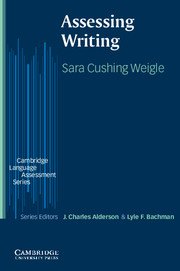Introduction
In Chapter 1, the role of writing in second-language learning was explored. In this chapter, we turn to a consideration of the nature of writing ability. Denning the skill that we want to test is a critical starting point in designing a test, and, as we shall see, the definition of writing ability for a particular context will depend in large measure on the considerations discussed in Chapter 1: that is, the specific group of second-language writers and the type of writing that these writers are likely to engage in.
This chapter looks at the nature of writing ability from several perspectives: first, in comparison with the other so-called productive skill of speaking, next as a social and cultural phenomenon, then as a cognitive activity. Finally, the relationship between writing and second-language proficiency is discussed.
The relationship between writing and speaking
It is traditional in language teaching and testing to categorize instances of language use into four skills: reading, writing, listening, and speaking, using channel (aural versus visual) and mode (productive versus receptive). The extent to which these different skills actually involve different cognitive mechanisms or are simply various socio-culturally mediated manifestations of a more general language ability is a matter of some controversy. While a full treatment of this issue is beyond the scope of this volume, in coming up with a definition of writing that can be useful for assessment it may be worthwhile spending some time considering the relationship between writing and the two skills most closely related to it: speaking (the other productive skill) and reading (the other visual skill).
